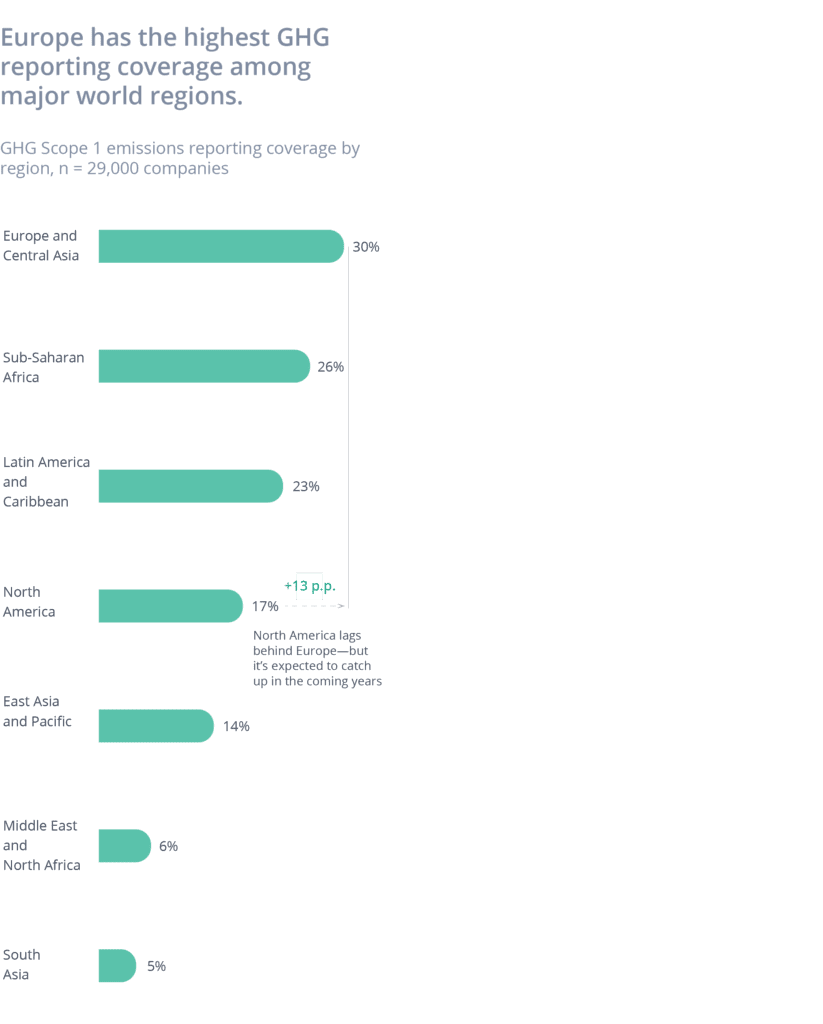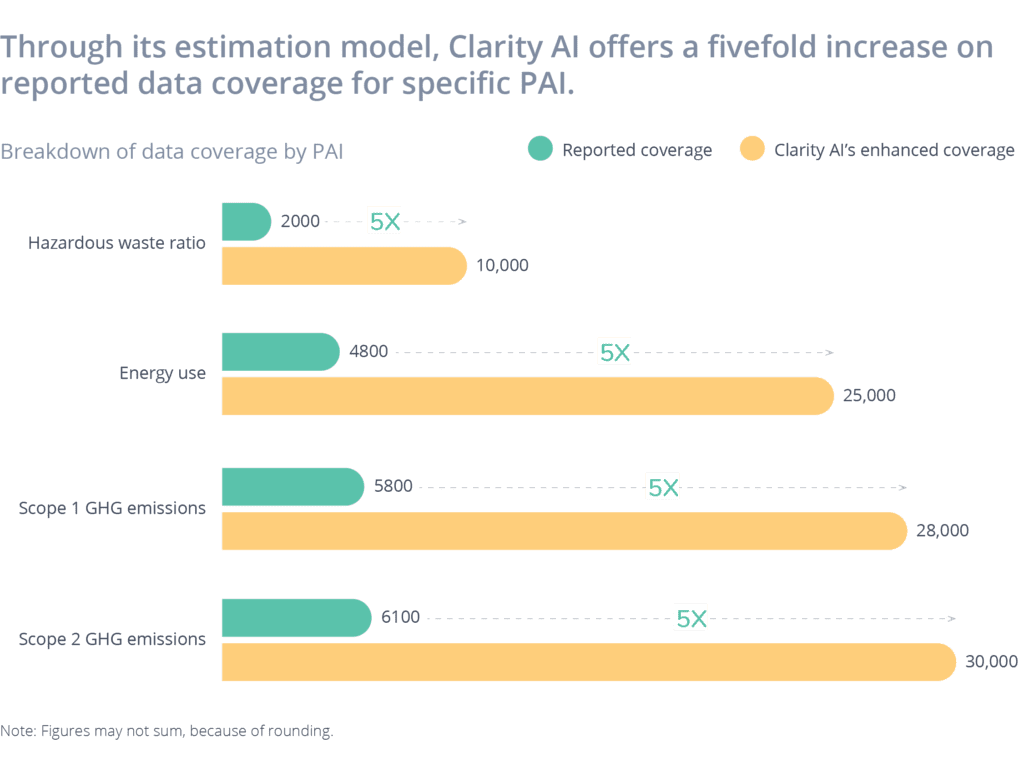Como a aprendizagem mecânica pode expandir a cobertura de dados de sustentabilidade
Utilização de modelos de estimativa para melhorar os relatórios de sustentabilidade
A falta de cobertura de dados é um grande obstáculo que pode ser ultrapassado através do uso da aprendizagem mecânica. Hoje em dia, 80% das empresas cotadas não reportam dados de sustentabilidade exigidos. Isto significa que, independentemente de questões de fiabilidade, apenas 20% das empresas cotadas em bolsa reportam dados abrangentes sobre sustentabilidade como base de referência. Muitos fornecedores podem então acumular informações parciais ou em falta, o que dificulta a criação de pontuações consistentes entre pares e a possível inclinação das pontuações para empresas que revelam selectivamente, deixando de fora dados sobre indicadores para os quais estão atrasadas. É por isso que Clarity AI aproveita a informação disponível das empresas e os algoritmos de aprendizagem por máquina para preencher as lacunas de informação, de modo a dar a imagem mais completa disponível.
Geograficamente, a Europa tem liderado o caminho com os regulamentos nacionais sobre relatórios de alterações climáticas para empresas, que se cristaliza na maior cobertura de relatórios de GEE entre as principais regiões do mundo. Entretanto, a US Securities and Exchange Commission está a preparar um regulamento específico sobre relatórios climáticos para 2022. A expectativa é que os relatórios na América do Norte alcancem a taxa na Europa dentro dos próximos dois anos.

Clarity AIModelos de Estimação
Uma aplicação da aprendizagem mecânica é o nosso modelo de estimação. O princípio subjacente aos modelos é descobrir como a métrica de desempenho de sustentabilidade pode ser derivada de outros atributos corporativos. Uma vasta gama de fontes de dados e características (informação sobre a organização) são utilizadas como input para os modelos de estimação, incluindo, por exemplo:
- Em que indústria se encontra?
- Que tipos de produtos e serviços vende?
- É um fabricante?
- Onde fazem os vossos produtos? - Onde é que vendem os vossos produtos?
- Quais são os seus custos de mão-de-obra?
- Quais são as outras características ambientais que podem estar correlacionadas com a métrica de interesse? (Isto depende do sistema métrico).

Os principais diferenciadores da metodologia de Clarity AIsão a estimativa da intensidade da métrica, a utilização de dados de retenção para testar a precisão preditiva do modelo, e a contabilização dos efeitos não lineares e de interacção. Estes são cruciais para estimar certas métricas de sustentabilidade como as emissões de CO2.



